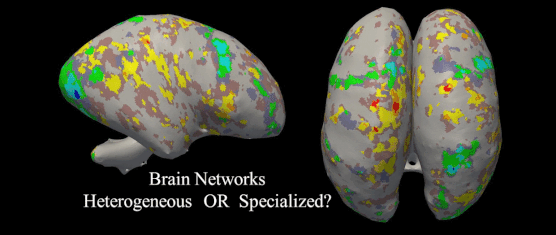Jinglei Lv, Xi Jiang, Xiang Li, Dajiang Zhu, Shu Zhang, Shijie Zhao, Hanbo Chen, Tuo Zhang, Xintao Hu, Junwei Han, Jieping Ye, Lei Guo, Tianming Liu, Northwestern Polytechnical University & The University of Georgia, Volume 62, Issue 4, Page:1120 – 1131

For decades, it has been largely unknown how and to what extent multiple functional networks spatially overlap/interact with each other and jointly realize the total cortical function. The critical lack of this key knowledge might be the underlying fundamental barrier to rigorously answering this long-standing debate in human neuroscience: is the functional human brain architecture composed of a collection of highly specialized components, each responsible for a dedicated aspect of human function, or is the brain architecture more of a general-purpose machinery, each component of which involved in a wide range of functional processes? In order to address the fundamental questions, in this work, we developed a novel sparse representation framework of whole-brain fMRI signals and applied it on the recently publicly released large-scale Human Connectome Project (HCP) tfMRI data. The basic idea of our computational framework is to factorize the whole brain fMRI signals into an over-complete signal basis dictionary and a sparse reference weight matrix of all voxels and networks via an effective online dictionary learning algorithm. A particularly important characteristic of this framework is that the decomposed reference weight matrix naturally reveals the spatial overlap/interaction patterns among reconstructed brain networks. Our results show that a number of robust functional networks, including both task-evoked and resting state networks, are reproducible across different tasks and individual brains, are simultaneously distributed in distant neuroanatomic areas, and are substantially spatially overlapping with each other, thus forming an initial collection of holistic atlases of functional networks and interactions (HAFNI). More interestingly, the HAFNIs revealed two distinct patterns of highly overlapped (heterogeneous) regions and highly specialized regions, and exhibited that these two patterns of areas are reciprocally localized, revealing a novel organizational principle of cortical function. Find more information about our research on http://hafni.cs.uga.edu/.
Key words: FMRI, Functional networks, Interaction, Heterogeneous, Specialized, Cortical architecture.

